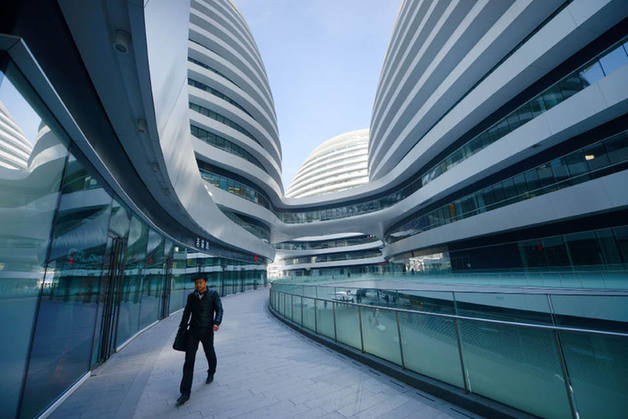Domestic Reforms Unleash Development Dividend
Unleashing Development Dividend via Reforms
As for how to realize 7.5 percent growth, Premier Li Keqiang enumerated China’s foundation and favorable conditions for its achievement. According to Li, China is still in a period of important strategic opportunities, which allows the country to develop itself to the fullest. What’s more, its industrialization and urbanization is progressing, and regional development is seeing vast possibilities.
In his report to the 18th National Congress of the Communist Party of China (CPC), delivered on November 8, 2012, then General Secretary Hu Jintao proposed that China would place a premium on its real economy, as a strengthened real economy will lay a solid foundation for sustainable development. The report pointed out: “We should focus on developing the real economy as a firm foundation of the economy. We should adopt policies and measures to better facilitate the development of the real economy. We should make the economy more demand-driven, promote the sound growth of strategic emerging industries and advanced manufacturing industries, accelerate the transformation and upgrading of traditional industries, develop and expand the service sector, especially modern service industries, and better balance the geographical and structural layout of the development of infrastructure and basic industries.”
If China does not rely on a large-scale stimulus package to fuel its economy, deepening reform will become its growth engine. These reforms are set to make the market play a decisive role in resource allocation while the government plays an enhanced role. Meanwhile, related reforms will be advanced to push forward the adjustment of economic structure, and remove barriers curbing market player vitality and impeding optimal allocation of production factors, so as to fully unleash the creative potential of the whole society.
In his report on the work of the government, Premier Li indicates, “The development we seek is development that is of better quality and returns, promotes industrial transformation and upgrading, and improves people’s lives. While maintaining steady growth, we need to shift from relying mainly on increasing inputs of production factors to driving development more by innovation, and from relying mainly on traditional comparative strengths to utilizing overall competitive advantages. We need to move up from the low to middle range of the international division of labor to the middle to high range, and shift from unbalanced urban-rural development to coordinated and balanced development.”
According to Wang Jun, vice-director of the Department of Consultancy under the China Center for International Economic Exchanges, as 2014 is the first year for China to carry out the range of reforms set down at the Third Plenary Session of the 18th CPC Central Committee, institutional dividends brought about by the reforms will impel the country’s economic operation, and enhance the stability of its economic growth, lessening volatility. Moreover, Wang points out that China’s macro controls would follow the principle of different measures for different growth situations, which means, if China’s economic growth nudges toward a projected rock bottom or soars too high, corresponding regulatory measures would be taken.
Li Yining, a professor with Peking University, holds this view: “China’s new demographic, resource and reform dividends are replacing the old ones. With the generation of new demographic dividends, China is transitioning to an era of advanced technicians from the era of technicians. Meanwhile, owing to the high investments in science and technology, new resource dividends are emerging. In contrast to China’s old resource dividends, the new dividends are mainly embodied in the application and utilization of science and technology, for example, seawater desalination which increases the country’s freshwater resources, and fighting desertification which expands China’s arable land. Newly introduced reforms are bound to bring new opportunities for China’s economic development.”
 |
| A white collar worker passes by a new office building in Beijing. |
